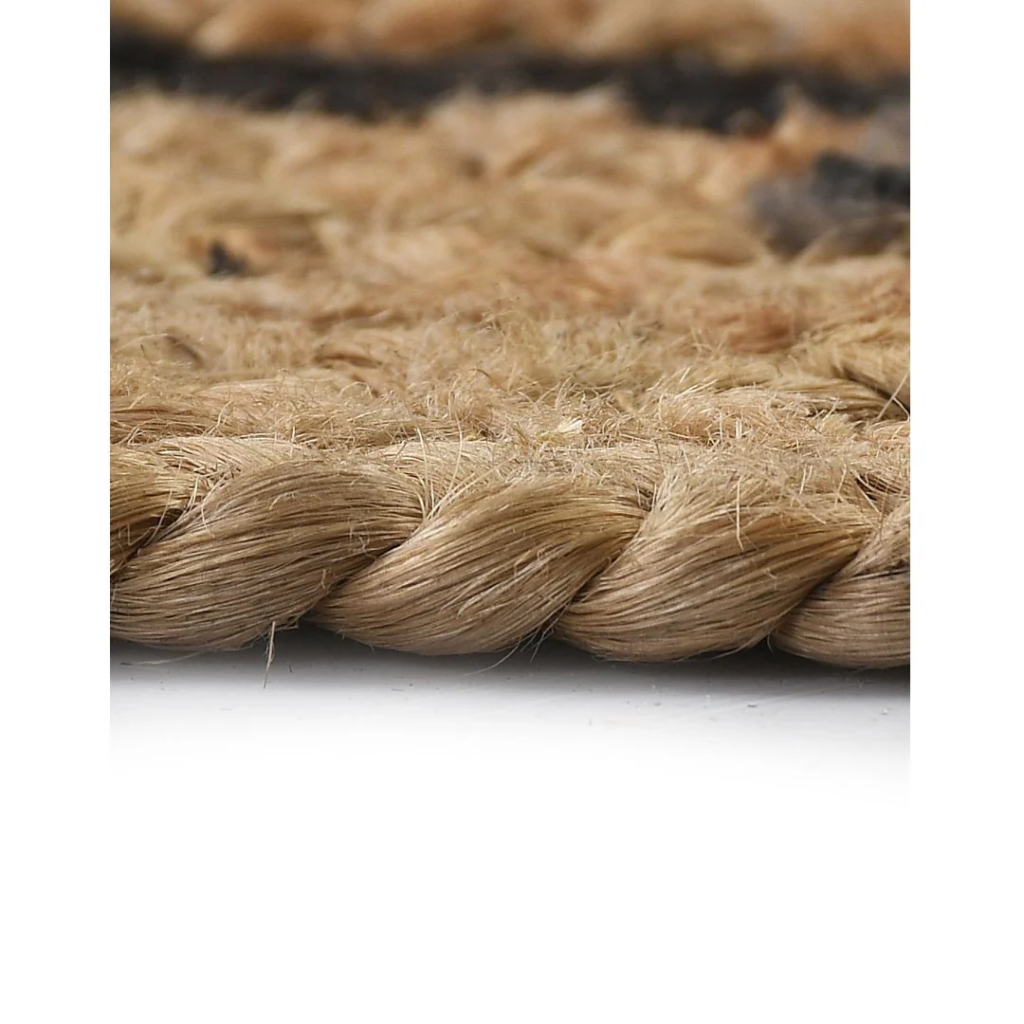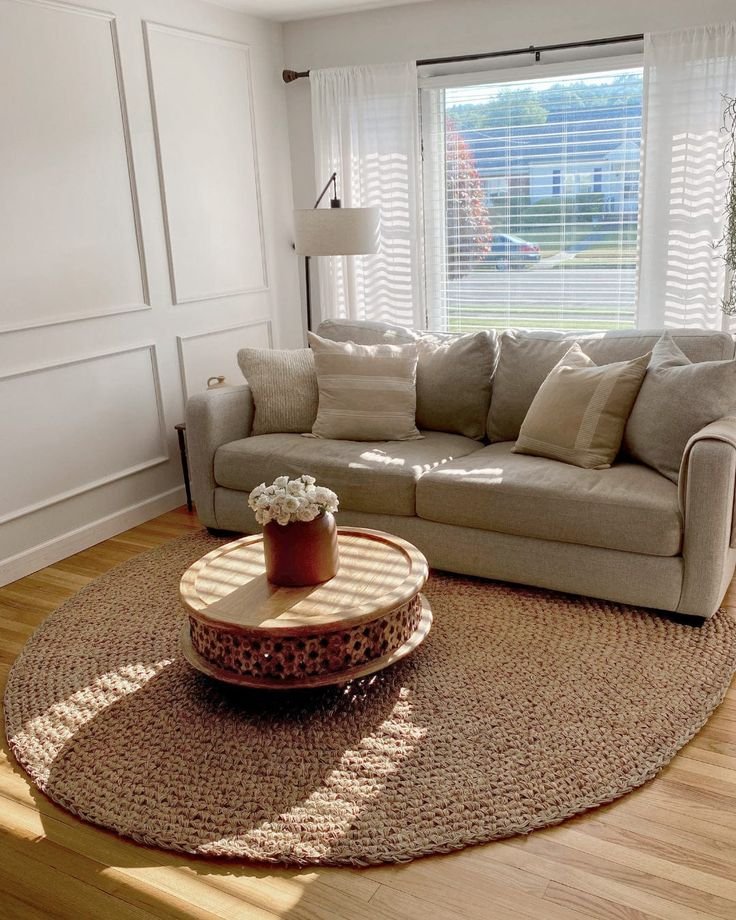Introduction to Jute Rugs
Jute rugs are increasingly gaining popularity in interior design, distinguished by their elegant aesthetics and natural appeal. Sourced from the fibers of the jute plant, primarily cultivated in tropical regions, these rugs offer an eco-friendly alternative to synthetic flooring options. One of the most compelling characteristics of jute rugs is their sustainability; they are biodegradable and renewable, making them a responsible choice for environmentally conscious consumers.
The intrinsic qualities of jute lend a unique texture and warmth to any space, making jute rugs highly versatile. They often feature earthy tones that can effortlessly complement various color schemes and styles, from bohemian to contemporary decor. By providing a natural, organic feel, jute rugs enhance the overall ambiance of a room while promoting a harmonious connection with nature.
Moreover, jute rugs are known for their strength and durability. The fibers are tightly woven, making them capable of withstanding heavy foot traffic, thus suitable for both residential and commercial spaces. Their maintenance is relatively straightforward—regular vacuuming and occasional cleaning are generally sufficient to keep them looking their best. This practical aspect adds to their appeal for homeowners and decorators alike.
As the demand for sustainable and stylish home decor continues to rise, understanding the origins and sourcing of jute rugs becomes essential. This overview sets the stage for exploring the top countries that excel in the production of high-quality jute rugs. By delving into the unique qualities and advantages of jute rugs, we can better appreciate the contributions of different regions to this flourishing market.

Leading Countries in Jute Production
Jute, a versatile and sustainable natural fiber, plays a pivotal role in the economies of several countries, primarily India and Bangladesh. These two nations dominate the global jute production landscape, accounting for a significant portion of the world’s supply. Their prominence in this sector can be attributed to favorable climatic conditions, traditional agricultural practices, and historical significance in the cultivation of jute.
India remains one of the largest producers of jute, particularly in the eastern states such as West Bengal, Assam, and Bihar. The region’s humid and tropical climate is ideally suited for jute cultivation, which thrives in warm temperatures and requires ample rainfall. The country has a long-standing tradition of jute farming that dates back to the early 19th century, establishing a deep-rooted cultural connection to the fiber. Moreover, the Indian government supports the jute industry through initiatives aimed at modernization and improving the livelihoods of farmers involved in its cultivation.
Similarly, Bangladesh is renowned for its exceptional quality jute, often referred to as “golden fiber” due to its economic significance. The country’s flat terrain and rich alluvial soil provide the perfect environment for jute growth. Furthermore, jute plays a crucial role in the socio-economic landscape of Bangladesh, where millions of farmers depend on its cultivation for their livelihoods. The government has implemented various measures to boost production and processing, contributing to the country’s strong export market.
Both nations are not only leaders in jute production but are also increasingly focusing on sustainable practices and market expansion. As the global demand for eco-friendly materials rises, jute production continues to evolve, reinforcing the importance of this fiber in furniture, fashion, and packaging industries.
Quality and Variety of Jute Rugs by Country
The world of jute rugs is rich and varied, driven by the craftsmanship and cultural influences of the countries that produce them. India, Bangladesh, and Nepal are foremost among the countries renowned for their high-quality jute rugs. Each of these regions offers distinct styles and techniques that contribute to the unique qualities of their products.
India, as one of the largest producers, showcases an extensive range of jute rugs that reflect its diverse heritage. From intricately woven rugs featuring traditional patterns to more contemporary, minimalist designs, Indian jute rugs are known for their durability and aesthetic appeal. The use of vibrant dyes and detailed craftsmanship allows for a variety of textures and color combinations that cater to modern interior decor trends.
Bangladesh holds a significant place in the jute market, producing rugs that are often handwoven by skilled artisans using age-old techniques passed down through generations. The quality of jute harvested in Bangladesh is often praised for its strength and natural luster. As a result, the rugs produced here not only serve functional purposes but also embody cultural narratives, often showcasing geometric patterns and nature-inspired motifs that reflect the region’s traditions.
Nepal, although smaller in production scale, offers a distinctive appeal in the jute rug sector. The combination of jute and wool is common in this region, providing a luxurious softness not typically found in other jute rugs. Nepalese designs often integrate vibrant colors and unique knotting techniques that add depth and texture, enhancing their artisanal quality.
The regional differences in craftsmanship, design, and textile techniques significantly contribute to the variety of jute rugs available. Traditional weaving practices ensure that each piece is imbued with cultural significance, making jute rugs not just functional items, but also works of art that tell a story through their textures and designs.

Considerations for Sourcing Jute Rugs
When sourcing jute rugs, several important factors must be taken into account to ensure not only the quality of the product but also the ethical and environmental implications of production. Ethical sourcing is paramount; it involves ensuring that workers are treated fairly and have safe working conditions. It is advisable to partner with suppliers who follow fair trade practices and provide transparency regarding labor conditions. Conducting due diligence and requesting information about a supplier’s compliance with labor standards can greatly assist in this regard.
Moreover, environmental considerations are crucial when sourcing jute rugs. Jute is often praised for being a sustainable fiber, but it is essential to confirm that the jute is sourced from areas where eco-friendly farming practices are employed. Suppliers should ideally engage in practices that minimize pesticide use and promote biodiversity. Evaluating a supplier’s commitment to sustainable practices can further enhance the overall reliability of your sourcing process.
Price comparison also plays a significant role in sourcing decisions. The cost of jute rugs can vary widely based on factors such as quality, workmanship, and the complexity of design. It is beneficial to obtain quotes from multiple suppliers to ensure competitive pricing while maintaining quality. Shipping logistics are another consideration; understanding the shipping process and associated costs, especially for international orders, is vital. Partnering with suppliers who have efficient logistics can reduce lead times and overall sourcing costs.
Finally, when seeking reliable suppliers, leveraging industry networks, attending trade shows, or seeking recommendations can provide valuable insights. Online platforms and directories that specialize in connecting buyers with suppliers of jute rugs may also yield fruitful results. Avoiding common pitfalls such as lack of clear communication or neglecting to check references can result in a more successful sourcing experience.


